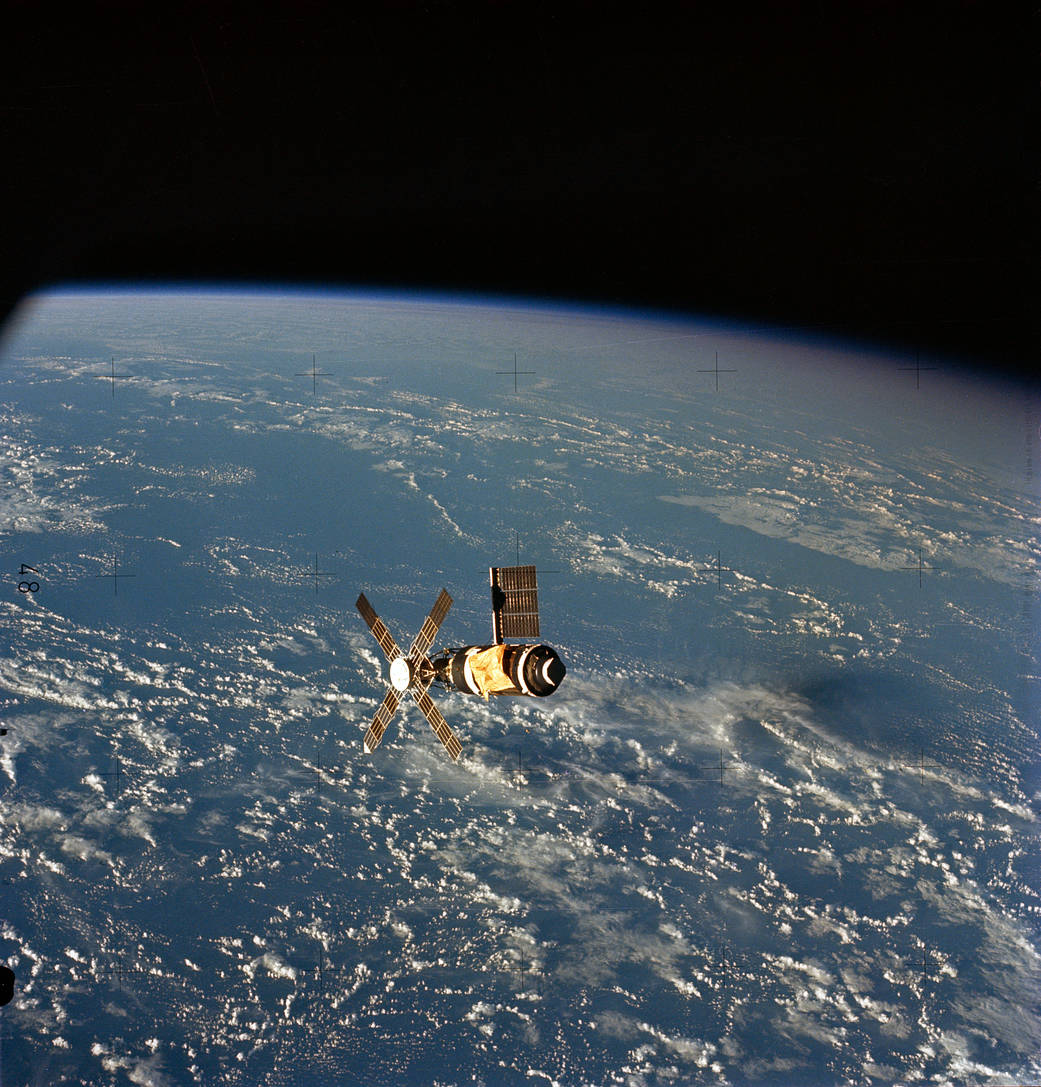During the Skylab 2 crew’s final fly-around inspection on June 22, 1973, they saw this overhead view of the Skylab space station. It has a single solar panel and a parasol solar shield, rigged to replace the micrometeoroid shield. A mishap in the original Skylab 1 liftoff and orbital insertion resulted in damage: both the second solar panel and the micrometeoroid shield were torn away.
When commander Charles “Pete” Conrad, pilot Paul J. Weitz, and science pilot Joseph P. Kerwin launched to the Skylab space station, the first part of their mission was to make repairs to the station, resulting in a record-breaking spacewalk. In the second half of their mission, Conrad, Weitz, and Kerwin focused on completing as much science as possible, research being the primary goal of Skylab.
On June 22, after undocking from Skylab and photographing it during a fly-around inspection, they fired the service module’s engine to bring them home, after completing 404 orbits around the Earth. They splashed down about 800 miles southwest of San Diego and 6.5 miles from the prime recovery ship, the aircraft carrier USS Ticonderoga.
Image credit: NASA
1973年6月22日,在天空实验室2号机组人员的最后一次绕飞检查中,他们看到了这张天空实验室空间站的俯视图。它有一个单独的太阳能电池板和一个阳伞式太阳能防护罩,用来取代微流星体防护罩。最初的天空实验室1号发射和入轨过程中的一个事故导致了损坏:第二块太阳能电池板和微流星体防护罩都被撕裂了。
当指挥官查尔斯·“皮特”·康拉德、飞行员保罗·j·韦茨和科学飞行员约瑟夫·P·克尔温飞往天空实验室1号空间站时,他们任务的第一部分是对空间站进行维修,从而实现了破纪录的太空行走。在任务的后半部分,康拉德、韦茨和克尔温专注于完成尽可能多的科学研究,研究是天空实验室2号的主要目标。
6月22日,他们从太空实验室2号分离,并在绕地球飞行检查期间拍摄了照片,然后点燃了服务舱的引擎,在绕地球飞行404圈后将他们带回家。他们在圣地亚哥西南约800英里处溅落,距离主要的回收船提康德罗加号航空母舰6.5英里。
影像来源:NASA







